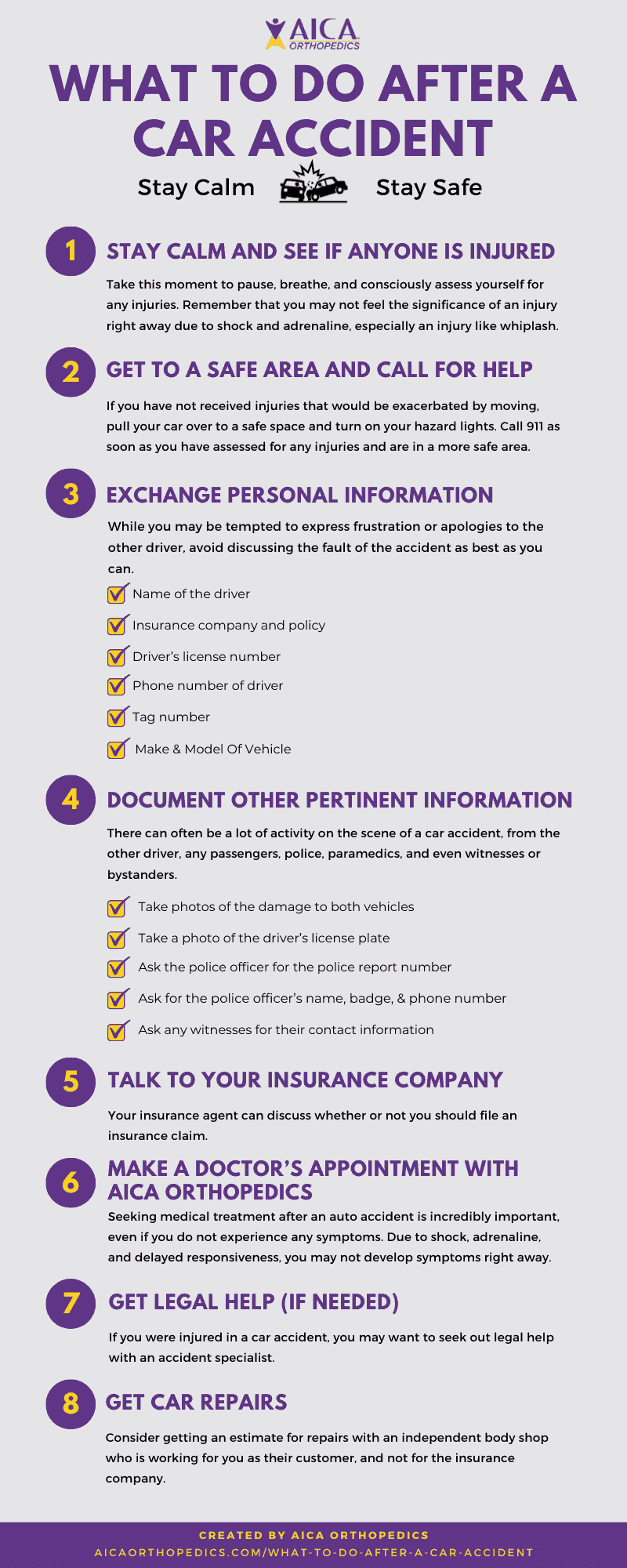Surgery After a Car Accident
After a car accident, surgery may be necessary to repair injuries and promote healing. The type of surgery required will depend on the severity and location of the injuries. Some common types of surgery after a car accident include:
If you have been injured in a car accident, it is important to see a doctor right away to assess your injuries and determine if surgery is necessary.
Types of Surgery After a Car Accident
The type of surgery required after a car accident will depend on the severity and location of the injuries. Some common types of surgery include:
*
*
*
*
*
The recovery time from surgery after a car accident will vary depending on the type of surgery performed and the severity of the injuries. In most cases, patients will need to stay in the hospital for a few days after surgery. Physical therapy and rehabilitation may be necessary to help patients regain their strength and mobility.
Risks of Surgery After a Car Accident
As with any surgery, there are risks associated with surgery after a car accident. These risks include:
*
*
*
*
*
The risks of surgery will vary depending on the type of surgery performed and the patient’s overall health. It is important to discuss the risks and benefits of surgery with your doctor before making a decision.
Benefits of Surgery After a Car Accident
Surgery after a car accident can provide a number of benefits, including:
*
*
*
*
In many cases, surgery is the best way to treat injuries sustained in a car accident. If you are considering surgery, it is important to weigh the risks and benefits carefully and make a decision that is right for you.
Surgery After Car Accident
If you’ve been in a car accident, you may be wondering if you need surgery. The answer depends on the severity of your injuries. If you have any of the following injuries, you may need surgery:
- Broken bones
- Lacerations
- Burns
- Head injuries
The type of surgery you need will depend on the nature and severity of your injuries.
Types of Surgery
There are many different types of surgery that can be performed after a car accident. The most common types of surgery include:
- Orthopedic surgery: This type of surgery is used to repair broken bones.
- Plastic surgery: This type of surgery is used to repair lacerations and burns.
- Neurosurgery: This type of surgery is used to treat head injuries.
The type of surgery you need will depend on the nature and severity of your injuries. Your doctor will be able to recommend the best course of treatment for you.
Orthopedic Surgery
Orthopedic surgery is a branch of medicine that deals with the diagnosis and treatment of injuries and diseases of the musculoskeletal system. This includes bones, joints, muscles, tendons, and ligaments. Orthopedic surgeons are trained to perform a variety of surgical procedures, including:
- Fracture repair: This is the surgical repair of a broken bone.
- Joint replacement: This is the surgical replacement of a damaged or diseased joint.
- Soft tissue repair: This is the surgical repair of muscles, tendons, and ligaments.
Orthopedic surgery is often necessary after a car accident to repair fractures and other injuries to the musculoskeletal system.
Plastic Surgery
Plastic surgery is a branch of medicine that deals with the restoration, reconstruction, or alteration of the human body. Plastic surgeons are trained to perform a variety of surgical procedures, including:
- Wound repair: This is the surgical repair of lacerations, burns, and other wounds.
- Scar revision: This is the surgical revision of scars to make them less noticeable.
- Breast reconstruction: This is the surgical reconstruction of the breasts after a mastectomy or other breast surgery.
Plastic surgery is often necessary after a car accident to repair wounds and other injuries to the skin and soft tissues.
Neurosurgery
Neurosurgery is a branch of medicine that deals with the diagnosis and treatment of disorders of the nervous system. This includes the brain, spinal cord, and peripheral nerves. Neurosurgeons are trained to perform a variety of surgical procedures, including:
- Craniotomy: This is the surgical removal of a portion of the skull to access the brain.
- Spinal surgery: This is the surgical repair of the spinal cord or vertebrae.
- Peripheral nerve surgery: This is the surgical repair of peripheral nerves.
Neurosurgery is often necessary after a car accident to treat head injuries and other injuries to the nervous system.
Surgery After Car Accident: A Comprehensive Guide
If you’ve been involved in a car accident, the aftermath can be physically and emotionally overwhelming. Injuries ranging from minor cuts and bruises to severe fractures and internal bleeding can require immediate medical attention. In some cases, surgery may be the best course of action to repair damage and restore function.
Common Surgeries
The type of surgery required after a car accident will depend on the extent and location of your injuries. Some common procedures include:
- Bone Repair: Broken bones are a frequent consequence of car accidents. Surgery may be necessary to realign and stabilize the fractured bone.
- Joint Replacement: Severe joint damage can sometimes necessitate joint replacement surgery, where damaged joints are surgically removed and replaced with artificial ones.
- Nerve Grafting: Injuries to nerves can result in loss of sensation, movement, or both. Nerve grafting involves transplanting a healthy nerve segment into the damaged area to restore function.
- Plastic Surgery: Facial injuries, burns, and other soft tissue damage may require plastic surgery to reconstruct and improve cosmetic appearance.
- Spinal Surgery: Spinal cord injuries can lead to paralysis or other life-altering conditions. Surgery is often needed to decompress the spinal cord and prevent further damage.
Recovery from surgery after a car accident can be a long and challenging process. Physical therapy, medication, and lifestyle adjustments may be an essential part of your rehabilitation. It’s crucial to follow your doctor’s orders and attend all follow-up appointments.
When Surgery Is Necessary
Not all car accident injuries require surgery. However, there are a few telltale signs that surgical intervention may be necessary:
- Severe pain: Constant and unrelenting pain that doesn’t improve with medication or rest could indicate a need for surgery.
- Loss of function: Unable to move a limb or perform a specific task could be a sign of nerve or muscle damage that requires surgical repair.
- Visible damage: Open wounds, protruding bones, or severe facial injuries often require immediate surgical attention.
- Infection: If an injury becomes infected, surgery may be necessary to remove the infection and promote healing.
Remember that surgery is not always the only option, and the best course of action will depend on your individual situation. Consult with your doctor to determine the most appropriate treatment plan for your injuries.
Surgery After a Car Accident: What to Expect
Car accidents can inflict devastating injuries, necessitating surgery to restore health and function. Surgery after a car accident is a major undertaking, and the road to recovery can be long and arduous. This article aims to provide a comprehensive overview of what to expect, from the initial surgery to the subsequent rehabilitation process.
Physical Recovery
Physical recovery from surgery after a car accident typically involves a gradual progression through several stages. Immediately following surgery, patients may experience pain, swelling, and mobility limitations. Physical therapy plays a crucial role in reducing inflammation, improving range of motion, and strengthening muscles. As the healing process advances, patients gradually regain mobility and function, progressing from walking to more strenuous activities.
Emotional Recovery
In addition to physical challenges, surgery after a car accident can also take an emotional toll. Patients may experience feelings of anxiety, depression, and post-traumatic stress disorder (PTSD). These emotions are natural responses to a traumatic event and should not be dismissed. Seeking professional help, such as therapy or counseling, can provide support and guidance during this challenging time.
Pain Management
Pain is an inevitable part of the recovery process after surgery. Doctors typically prescribe pain medication to alleviate discomfort. However, it’s crucial to use pain medication judiciously and follow the doctor’s instructions carefully. Patients should also explore alternative pain management techniques, such as acupuncture, massage therapy, or meditation. These methods can help reduce the need for medication and promote overall well-being.
Rehabilitation
Rehabilitation is a vital component of recovery after surgery. It involves a comprehensive approach that encompasses physical therapy, occupational therapy, and sometimes even speech therapy. Physical therapists help patients regain mobility and strength, while occupational therapists focus on improving daily living skills, such as dressing, eating, and grooming. Speech therapy may be necessary if the accident affected communication or swallowing. Rehabilitation is an ongoing process that can take months or even years, depending on the severity of the injuries.
Tips for a Successful Recovery
Navigating the recovery process after surgery for a car accident can be daunting, but these tips can help:
- Follow your doctor’s instructions carefully.
- Attend all physical and occupational therapy appointments.
- Manage pain wisely and explore alternative therapies.
- Seek professional help for emotional support if needed.
- Set realistic goals and celebrate your progress.
- Stay positive and don’t give up.
Surgery after a car accident is a significant undertaking, but with the right support and a positive mindset, you can embark on the path to recovery and reclaim your health and well-being.
Surgery After a Car Accident: Navigating the Long Road to Recovery
The aftermath of a car accident can be a whirlwind of medical emergencies, pain, and uncertainty. If surgery is part of your recovery plan, understanding what lies ahead can help you navigate this challenging time. While the road to recovery can be arduous, with patience, determination, and a dedicated medical team by your side, you can regain your strength and mobility.
Rehabilitation: The Key to Restoring Function and Mobility
Rehabilitation is the backbone of your recovery journey after surgery. This comprehensive process, typically involving physical and occupational therapy, is designed to restore your physical function, flexibility, and range of motion. Through a personalized plan tailored to your specific needs, you’ll gradually regain strength, improve coordination, and relearn essential daily tasks. Patience is paramount during this stage, as progress takes time and consistent effort.
Pain Management: Finding Relief and Comfort
Surgery can inevitably bring about discomfort and pain. Managing this pain effectively is crucial for a successful recovery. Your medical team will prescribe medications to alleviate pain and may also recommend physical therapies like heat or cold treatments to reduce inflammation. It’s essential to follow your doctor’s instructions carefully, take medications as prescribed, and attend all physical therapy sessions to minimize discomfort and accelerate healing.
Emotional Recovery: Dealing with Stress and Uncertainty
Along with physical challenges, surgery can take an emotional toll. Dealing with the stress and uncertainty of recovery can be overwhelming. Don’t hesitate to seek support from loved ones, support groups, or a therapist. Talking about your feelings and connecting with others who understand what you’re going through can make a world of difference in your emotional well-being.
Lifestyle Adjustments: Adapting to a New Normal
After surgery, you may need to make lifestyle adjustments to accommodate your changing physical abilities. Modifying your home environment, using assistive devices, and adopting ergonomic practices can help you regain independence and resume daily activities. It’s important to approach these changes with a positive mindset, focusing on what you can do rather than what you can’t. With determination and a willingness to adapt, you can find ways to live a fulfilling life after surgery.
Surgery After a Car Accident: A Comprehensive Guide
A car accident can be a traumatic experience, both physically and emotionally. In some cases, injuries sustained in a car accident may require surgery to repair and restore the affected areas. If you’ve been injured in a car accident, it’s important to seek medical attention as soon as possible to determine the extent of your injuries and whether surgery is necessary.
Types of Surgery After a Car Accident
The type of surgery required after a car accident will depend on the nature and severity of the injuries. Some of the most common types of surgery performed after a car accident include:
- Fracture repair surgery to fix broken bones
- Soft tissue surgery to repair damaged muscles, tendons, and ligaments
- Organ repair surgery to address injuries to internal organs
- Plastic surgery to repair facial injuries and other visible wounds
Preparing for Surgery
Before undergoing surgery, your doctor will discuss the procedure with you in detail. They will explain the risks and benefits of surgery, as well as what to expect during and after the operation. You will also be given instructions on how to prepare for surgery, such as fasting before the procedure.
Recovery from Surgery
The recovery time after surgery will vary depending on the extent of the injuries and the type of surgery performed. In general, you can expect to spend several days in the hospital after surgery. During this time, you will be monitored closely by medical staff and receive pain medication and physical therapy to help you recover.
Complications
While most surgeries are successful, there is always a risk of complications. Some of the most common complications associated with car accident surgery include:
- Infection
- Bleeding
- Nerve damage
- Blood clots
- Organ failure
- Death
Prognosis
The prognosis for surgery after a car accident will vary depending on the severity of the injuries, the type of surgery performed, and the individual patient’s overall health. Some patients may make a full recovery, while others may experience long-term complications or disabilities.





Leave a Reply